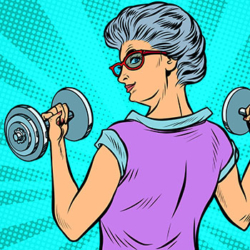 The pandemic has brought to the forefront of workers everywhere that we definitely have generational diversity. In short, generational diversity refers to differences in attitudes, values, and behaviors across age groups. Every generation is shaped by the historical, cultural, and social events during our formative years and has the opportunity to learn from the experiences and wisdom of those that came before them.
The pandemic has brought to the forefront of workers everywhere that we definitely have generational diversity. In short, generational diversity refers to differences in attitudes, values, and behaviors across age groups. Every generation is shaped by the historical, cultural, and social events during our formative years and has the opportunity to learn from the experiences and wisdom of those that came before them.
In theory, this creates a continuous cycle of learning and cultural continuity that helps preserve each group’s unique identity and mixes to create our overall diverse cultural humanity.
There is a yin and yang to this intergenerational sharing of mores. The exchange of ideas and viewpoints between generations can be a source of innovation and progress, as different perspectives can lead to new solutions to problems. However, different generations often have different perspectives on social, political, and economic issues, which can lead to conflicts and debates over the direction of society.
 We have never seen the dramatic differences in how we learn and transmit this knowledge than we have today across three generations.
We have never seen the dramatic differences in how we learn and transmit this knowledge than we have today across three generations.
Television was new to the oldest generation when most of their learning came from reading books, culture came from close-knit communities, and the outside world was viewed through the cinema.
The middle generation saw the start of the internet, news from around the world as it happened, and much more interaction between other cultures. In addition, movies and television widely replaced books as a means of learning about cultures and history.
The youngest generation takes the internet for granted and has interacted on social platforms that connect individuals across time and space. Individuals will now interact more with people online that they agree with and get their news from one source that may well only agree with their point of view. This has led to a bifurcation of political norms where there is little middle ground. The oldest generation now makes up the vast majority of what is considered the middle ground, the middle generation is somewhere in the in-between, depending on what access they had to the internet growing up, and the youngest generation has become very rigid in their beliefs.
Obviously, this is an oversimplification, but because how we learn and share information and how the universe of people we interact with has changed so dramatically, generational diversity has created fissures between generations to a degree we have never seen before.
 Some differences have not changed, though.
Some differences have not changed, though.
Younger generations are often more focused on social justice and environmental issues, while older generations are logically more concerned about healthcare. This leads to differences in community engagement as different generations work to address those issues near and dear to them. The older generation is more likely to participate in traditional forms of community services, such as service clubs. Younger generations are more likely to engage in more innovative forms of community engagement, such as organizing a social media campaign. Older generations are more apt to work within existing systems in their communities, while younger generations are more interested in challenging these systems and advocating for change.
Leadership styles also differ across generations.
Older generations are likely to adopt a more traditional, hierarchical leadership style, while younger generations are more interested in collaborative and participatory forms of leadership. Generational diversity can also significantly impact how we use technology to engage with others and address issues. Older generations are generally more comfortable with traditional communication forms and slower to adopt new technologies while the younger generations are much more comfortable using social media and other digital tools to engage with their communities.
After almost 40 years of teaching in higher education, I have been blessed to observe two generations of youth.
In the past 20 years, I have seen how mixing adult learners with traditional college-age students can enhance learning for everyone. I encourage all of us to experience intergenerational interaction. We need to bring people of all ages and cultures together to work on common projects, where the strengths of each generation may blend into bringing all of us closer together. Consider the prism where pure light enters and every color under the rainbow comes through. Intergenerational interaction is the prism in reverse, all colors and cultures go in, and en”light”enment comes out the other side.
January 2023




